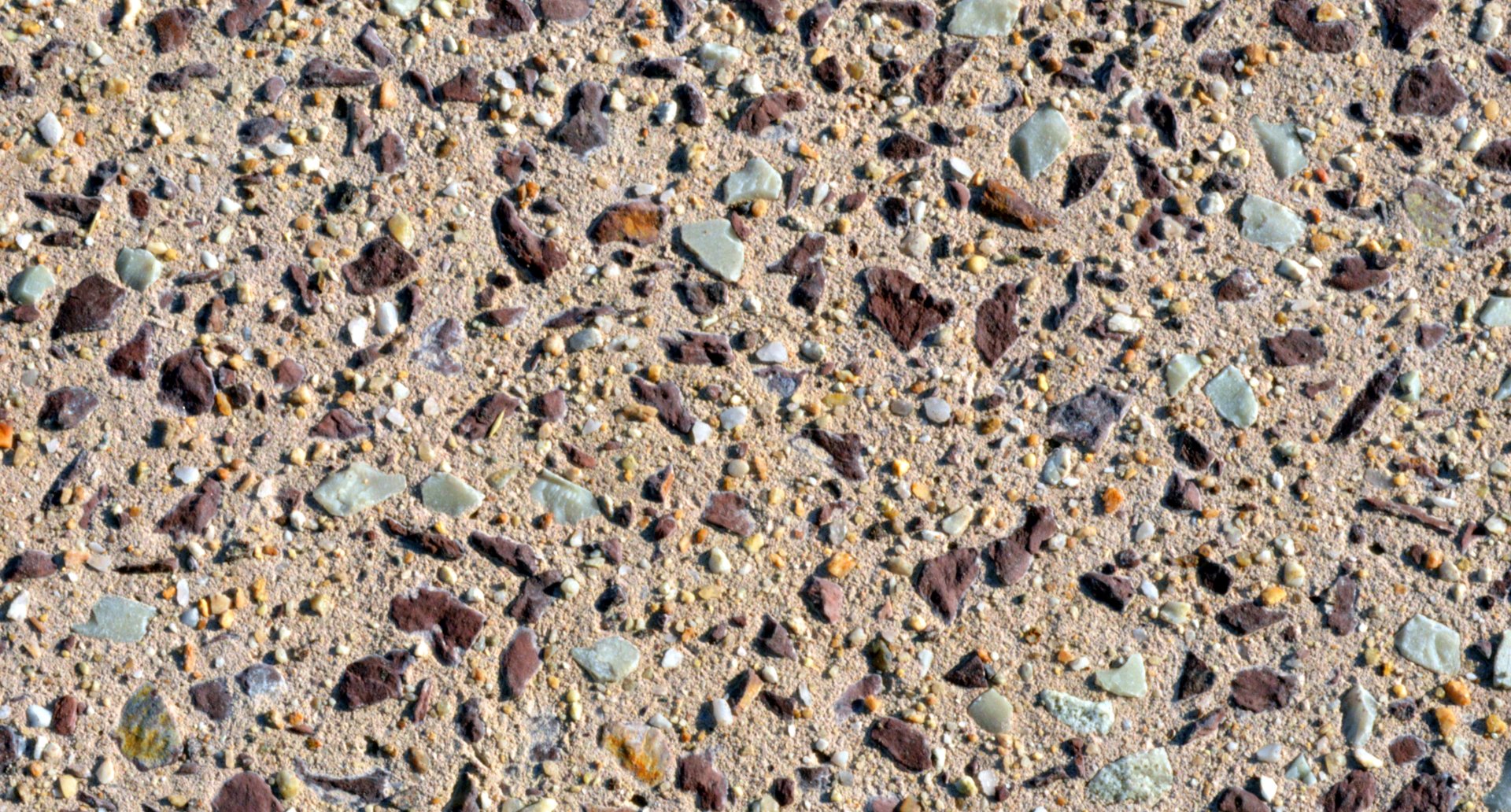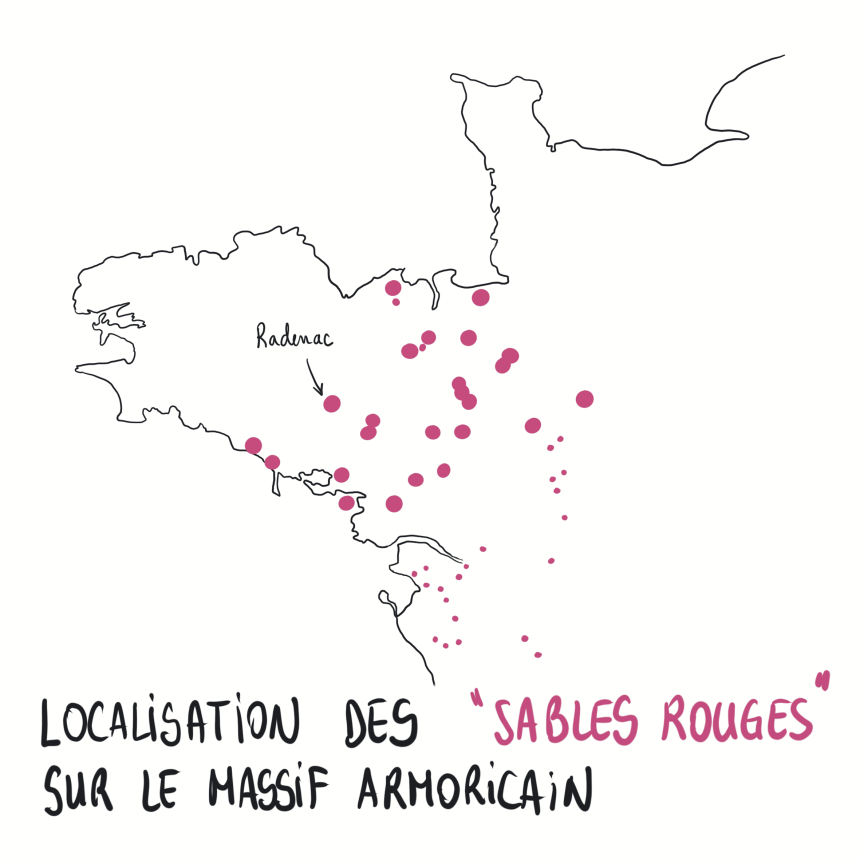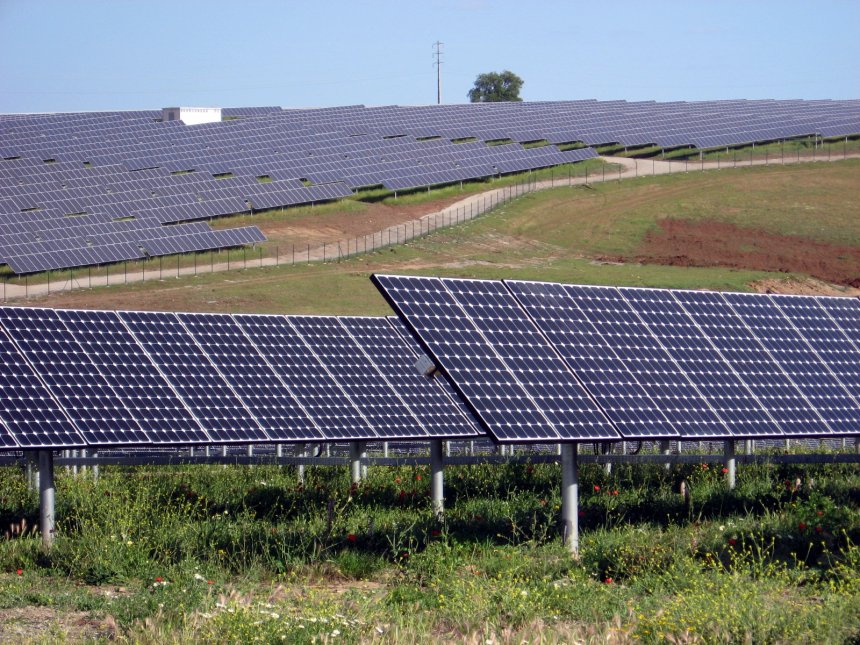Stone : sand
Type : sediment
Age : between 7 and 3.5 million years
Quarry : "Carrière du Moulin", Radenac (Morbihan)
Stone : red siltite
Type : metamorphic rock
Age : 480 millions years
Quarry : "Carrière de Trékoët", Muel (Ille-et-Vilaine)
Sand: A Highly Sought-After Material
The sands of Radenac have been exploited since the early 20th century. These river sands are highly valued for making concrete. Every year, humanity consumes over 50 billion tonnes of sand (80% of which is used for concrete production). That’s equivalent to a one-meter-thick layer of sand spread across all of Brittany. Sand is the second most-used material on Earth, after water.
The Red Siltstone of Muel
The Muel quarry is operated by the company Pompéi, a public works firm based in Brittany for over 100 years. Opened in 1948, the quarry mainly supplies aggregates for roadworks. It is still active today. Geologically, these siltstones belong to the Pont-Réan Schist Formation (see installation 12).
In an Abandoned Ria
The "red sands" extracted at Radenac are ancient sedimentary deposits laid down in the bed of a deep valley near an estuary (a ria or aber). Their presence at over 80 meters in elevation reveals fluctuations in sea level, and therefore, climatic changes. Similar deposits from the same period crop out in other parts of the Armorican Massif. At that time, the island of Brittany (yes, it was once an island) enjoyed a humid subtropical climate, much like Florida today.
Sand, Solar Panels: Silicon, My Love
This quarry is no longer active and will not be reopened — the resource is depleted. A landscape, ecological, and agricultural redevelopment project is under consideration, which also includes plans for a solar power plant. Truly, silicon is everywhere: it forms the quartz grains in sand and the cells of solar panels.


